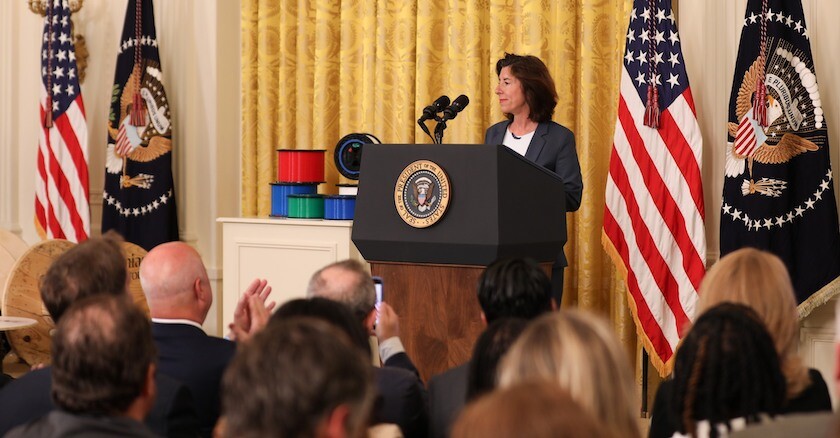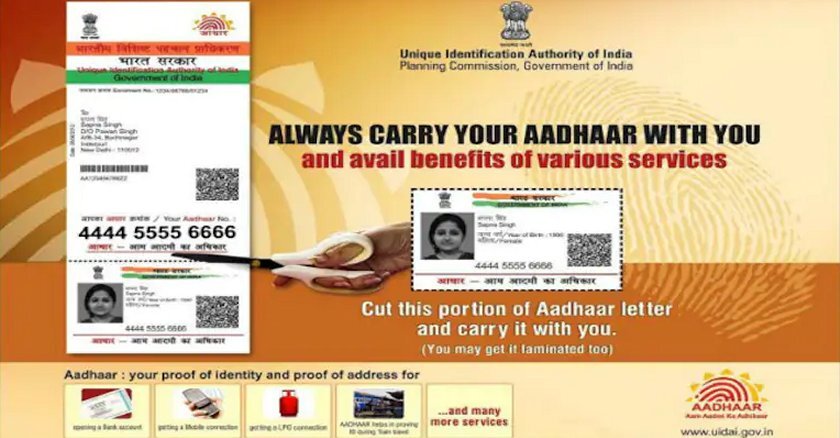In Brief:
The Infrastructure Investment and Jobs Act (IIJA) defines digital equity as “the condition in which individuals and communities have the information technology capacity that is needed for full participation in the society and economy of the United States.” The bill allocated more than $42 billion to a Broadband Equity, Access and Deployment (BEAD) program to help states make digital equity a reality.
The sectors of the population most likely to be behind the information technology curve are those most affected by housing shortages, heightened health risks and jobs that don’t deliver a true living wage. Digital tools and skills will bring opportunities to lift these Americans, and their communities.
These opportunities won’t come immediately, however. The IIJA was signed in 2021, but the four-year implementation phase for BEAD won’t begin until 2024.
At the end of June, the Biden-Harris administration announced the state-by-state allocations of $42.45 billion in BEAD funding. (See map below.) Calculations for these grants started from a baseline of $100 million for each state, then took into account the number of unserved locations and the prevalence of demographic or topographic factors that could make broadband deployment cost more.
States are to submit initial proposals for using their allocations to the National Telecommunications and Information Administration (NTIA) within 180 days of the announcement, and to seek public comment regarding their plans. Final plans are due within 12 months after initial proposals are approved by NTIA.
“States are going to play a big role to set allocations within the state, and goals and priorities, but local communities are still going to have to do the planning to carry this out,” says Karen Mossberger, director of the Center for Technology, Data and Society at Arizona State University (ASU). “There are all kinds of locally driven factors that will affect how communities implement this and how effective they are going to be.”
A number of nonprofit and academic partners have been working steadily to help state and local officials stay in sync with BEAD processes, requirements and deadlines. They’ve also developed a range of resources to help them with this planning phase.
Here’s a look at what’s available.
Arizona State University: Helping Leaders
ASU and the Marconi Society collaborated to create a 12-week Digital Inclusion Leadership Certificate, an online offering from ASU. The historic expansion of digital inclusion and broadband programs is welcome, Mossberger says, but there’s a skill set gap.
Both government officials and community organizations will be needed to guide this work. “There are going to be great leaders, people who are really grounded in their communities, who are going to be filling these roles who don’t necessarily have background in policy issues, technology issues or the applications of digital equity,” she says.
ASU and Marconi developed curriculum to address all of this, with modules on network technology, broadband impacts and applications, and digital inclusion concepts, resources and policy. Speakers in dozens of videos produced for the course include leaders from the worlds of academia, policy, nonprofits and broadband technology, including Google’s Vint Cerf, recognized as one of the fathers of the Internet.
Peer-to-peer discussion groups are another element of the training. “We'll see how many people sign up,” Mossberger says. “If it becomes large, we can still maintain discussion groups of about 20 or so in the online environment and break them into smaller groups.”
Enrollment is open for the first session, which begins Sept. 18. A pilot group is already working through the material. Feedback has been strong, Mossberger says, even from those with experience in this space.
Pew: Overcoming Information Barriers
In 2021, the Pew Charitable Trusts launched a broadband education and training initiative (BETI) to provide no-cost assistance to state broadband offices. It is aimed at officials who are responsible for administering the broadband funds, says Project Director Kathryn de Wit (a speaker in the ASU course).
Information gaps can be off-putting and intimidating, de Wit says. “Over the last few years, we’ve focused on developing educational content that can remove some of those information barriers and explain key concepts, terms and policies and — most importantly — how all these elements work together.”
About half of U.S. states have engaged with BETI, which includes technical assistance and peer-to-peer learning opportunities. The material it provides includes speeches, testimony, articles, issue briefs, fact sheets and reports.
BETI was established, de Wit says, because there is no professional association for state broadband offices. “That’s not to say these folks don’t have qualifications to run these offices — we develop these materials because there isn’t another entity that is helping states prepare in a holistic way.”
Pew also tracks office staffing and structure, broadband funding activity and policy trends across all 50 states, doing comparative analysis that can help state offices and lawmakers place their efforts in a national context.
“I hope we’ll see more integration of digital equity programming, evaluation and professional development embedded in education certifications, in public administration writ large,” says de Wit.

(Andy Cross/TNS)
Next Century Cities: Assistance for Local Leaders
The nonprofit Next Century Cities works to support local efforts in regard to broadband access. Digital equity needs to be a foundational component of broadband programming, says Francella Ochillo, the group’s executive director.
“Digital equity strategies are not just about investing an influx of money into a program, but also about equipping communities to be able to provide social infrastructure that complements the physical infrastructure,” says Ochillo. The BEAD dollars aren’t enough to ensure the longevity of programs, so it’s important for communities to be able to help themselves.
Next Century City’s resources are largely geared toward, and influenced by, what local governments are doing. They include case studies, a thought leadership series and a “Becoming Broadband Ready” toolkit.
Accurate maps of existing coverage are essential to BEAD plans. Federal Communications Commission (FCC) maps have been a longstanding source of controversy, often painting a picture that overstates how many residents are actually connected to broadband service. A Next Century Cities report examines these mapping shortcomings and details what some states have been doing to gather more accurate data.
There’s also guidance for community-based organizations. “We're trying to give them every opportunity to be a part of the public dialog around the digital outcomes in their communities,” says Ochillo.
This help extends to identifying who in local government is working on broadband deployment, or deadlines for public comment on local plans. At the other end of the spectrum, federal officials use Next Century City’s material to get a better idea what’s going on at the local level.

(Hawaii Digital Equity and Broadband Office)
NDIA: Digital Inclusion Facilitator
Angela Siefer, executive director of the National Digital Inclusion Alliance (NDIA), is another expert contributor to the ASU certificate course. Digital inclusion, as defined in the IIJA, refers to “the activities that are necessary to ensure that all individuals in the United States have access to, and the use of, affordable information and communication technologies. ...”

(NDIA)
NDIA acts as a facilitator for over 1,000 local organizations that have programs centered on digital inclusion. “We like to do as much as we can at scale, as much as we can that is free and open to the public,” she says of NDIA’s resources.
Government agencies and U.S. nonprofits can join NDIA as affiliate organizations and participate in its listserv and monthly “Community Calls.” There are working groups within the affiliates, sometimes around specific projects, or for those working to implement a digital navigator model NDIA has helped to develop.
It has compiled a list of Digital Inclusion Trailblazers, communities that can serve as models and inspiration. This “honor roll” of local initiatives includes contacts in each jurisdiction and links to such things as job descriptions, surveys, inclusion plans, budgets, legislation and funding proposals.
NDIA hosts quarterly Digital Inclusion 101 webinars; past webinars can be found on its YouTube channel. Guidebooks for discount Internet services, coalition building and best practices for creating digital inclusion programs are available on its resources page.
Attitudes Toward Inclusion Have Changed
These supportive materials are being offered at a time of universal agreement about the importance of making broadband available and teaching digital skills. Things get sticky around questions of the funding needed to fully achieve digital equity and sustain it, says Siefer.
As she sees it, long-term success will come from building robust digital inclusion ecosystems in which everyone knows what everyone else is doing, evaluating program impacts and making the case that inclusion is good for the bottom line of both public and private sectors.
“When I first started working on this issue, there were cities where if I said, ‘digital equity,’ they said, ‘We don’t do that,’” Ochillo says. Attitudes have changed, however, even if some prefer terms such as “digital opportunity.”
“Everyone is aware that the entire community is at a disadvantage when you have large populations that are digitally disadvantaged,” says Ochillo. “The reason digital equity is so important in this moment is because it's the first time that we're assigning federal and state dollars to the issue.”
Related Articles














